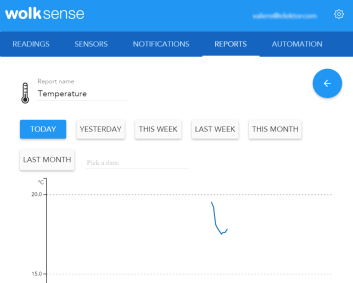Review: Hexiwear Power User Pack
Take me to the cloud
Probably the first thing a user will do is connect Hexiwear to a computer and so did I. It will come alive and by touching the dotted surfaces around the display you can navigate through menus and play with applications. (Tap it twice to wake it up.) Doing so will quickly show you what the device has to offer. I will not go into detail here, it is all very intuitive. One thing though, through the ‘Settings’ menu you have access to a ‘Get app’ option that will show QR codes to take your phone quickly to Google Play or the Apple Store from where you can download the Hexiwear App. With this App you can set the date and time of the device (you must, of course, create a WolkSense account, switch Bluetooth on, pair, etc.). With the Hexiwear in ‘Sensor Tag’ mode you can see all the available sensor data on your phone (battery level, temperature, relative humidity, atmospheric pressure, light level, 3-axis accelerometer, magnetometer and gyroscope, but not the heart-rate sensor).

On your PC you can connect to WolkSense too and create graphs (reports) for the data provided by the sensors (on a 10-minute update rate; curiously, the time seems to be off by 10 minutes). At first this didn’t work for me until I noticed that my phone was not on my Wi-Fi network. I suppose it will also work over 1/2/3/4G etc. but there is probably something to configure on the phone first.
The App also has a mysterious cloud icon that you can toggle. With it, I guess, you can connect or disconnect to the cloud?
DiY IoT
The apps loaded on the device are nice but they are, of course, not the reason to get into Hexiwear. As the Kickstarter page puts it: Its greatest feature is the new and original firmware you will develop.
There are several ways to develop applications:
- NXP Kinetis Design Studio toolchain
- Zephyr from the Linux Foundation
- ARM’s mbed
Option 1 is for the experienced programmer who does not scare away from downloading hundreds of megabytes of programs and add-ons from multiple sources, installing them and end with an Eclipse configuration session. A detailed description on how to do this is available online.
Option 2 is for the developer who wants to try something new — Zephyr is a bit more than one year old — and who prefers to work in a Linux environment.
Option 3 is for the “lazy”, the people like me, who just want to get started as quickly as possible without any hassle.


Discussion (0 comments)